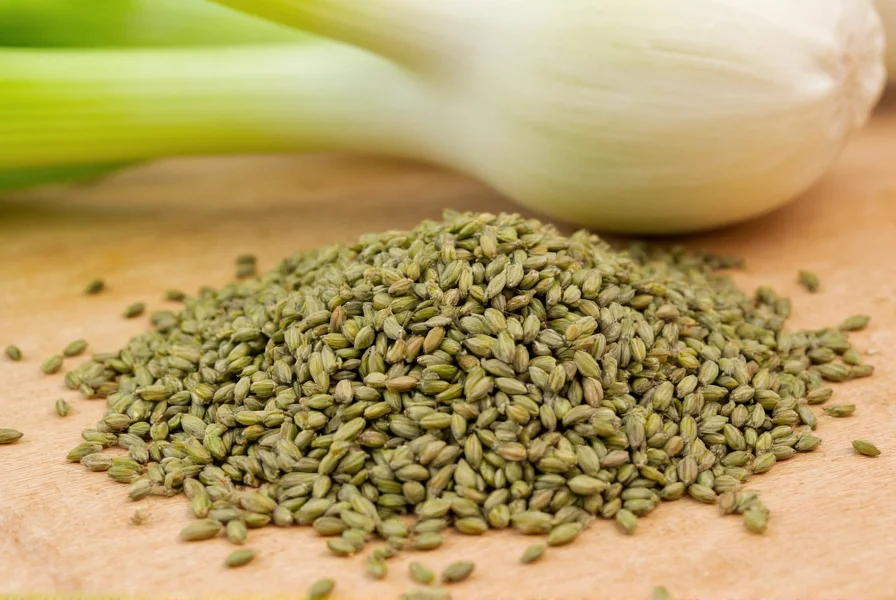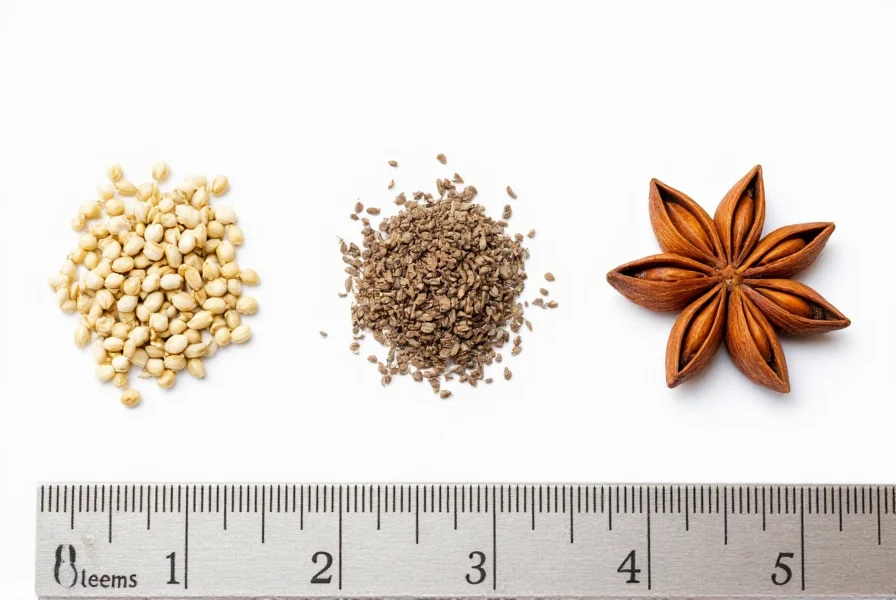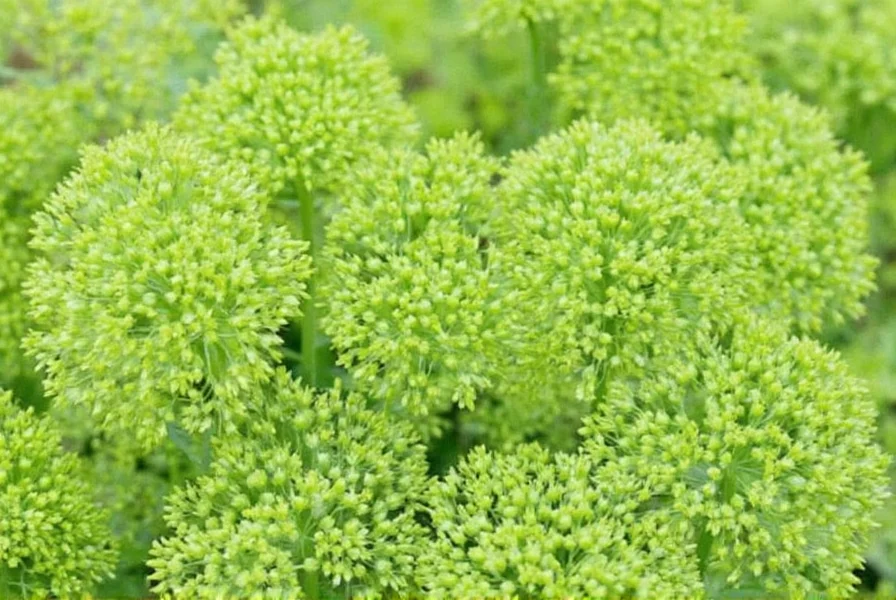Fennel seed has been valued for thousands of years across multiple civilizations. Ancient Egyptians, Greeks, and Romans all utilized this versatile spice for both culinary and medicinal purposes. The Romans considered fennel sacred, believing it imparted courage and strength. During the Middle Ages, fennel seed was commonly hung over doorways to ward off evil spirits and was frequently used in herbal remedies.

Botanical Characteristics and Harvesting Process
Fennel (Foeniculum vulgare) belongs to the Apiaceae family, which includes carrots, celery, and parsley. The plant grows up to 2.5 meters tall with feathery leaves and yellow flowers that eventually develop into the familiar seeds. Harvesting occurs when the seed heads turn from green to brown and the seeds become dry but haven't yet fallen from the plant. Farmers typically cut the seed heads and allow them to dry further before threshing to separate the seeds.
Culinary Applications Around the World
Chefs and home cooks utilize fennel seed across diverse culinary traditions. In Indian cuisine, it's a key component of panch phoron, a five-spice blend used in Bengali cooking. Italian sausage makers rely on fennel seed for authentic flavoring, while Scandinavian bakers incorporate it into rye breads and pastries. The seeds work particularly well with fish, pork, tomatoes, and root vegetables.
| Cuisine | Common Uses | Flavor Pairings |
|---|---|---|
| Mediterranean | Seafood dishes, olive breads, tomato sauces | Lemon, garlic, oregano, fish |
| Indian | Curry bases, lentil dishes, spice blends | Turmeric, cumin, ginger, coconut |
| Mexican | Mole sauces, bean dishes, meat rubs | Chili powder, cumin, chocolate, avocado |
Nutritional Profile and Potential Benefits
What is fennel seed nutritionally? Per tablespoon (6.7g), fennel seed contains approximately 25 calories, 1g protein, 3g carbohydrates, and 2g dietary fiber. It's particularly rich in manganese (providing 17% of daily value), calcium (6%), and iron (5%). The seeds also contain flavonoids, phenolic compounds, and volatile oils including anethole, which contributes to both flavor and potential health properties.
When exploring fennel seed benefits, research suggests potential digestive support, anti-inflammatory effects, and antioxidant activity. Many cultures have traditionally used fennel seed to alleviate bloating and support healthy digestion. However, these potential benefits shouldn't be construed as medical advice, and individuals with specific health concerns should consult healthcare professionals.
Distinguishing Fennel Seed from Similar Spices
Many people wonder about the difference between fennel seed and anise. While both share a licorice-like flavor due to the compound anethole, they come from different plants. Fennel seed (Foeniculum vulgare) has a more complex flavor profile with herbal notes, while anise seed (Pimpinella anisum) delivers a stronger, sweeter licorice taste. Star anise (Illicium verum), another common confusion, comes from a completely different plant family and has a more intense, medicinal flavor.

Practical Usage Tips for Home Cooks
Understanding what is fennel seed used for in cooking begins with proper preparation. For maximum flavor, lightly toast whole seeds in a dry skillet over medium heat for 2-3 minutes until fragrant, then crush or grind as needed. Whole seeds maintain their potency for 1-2 years when stored in an airtight container away from light, while ground fennel loses flavor more quickly.
When substituting fennel seed in recipes, anise seed works in a 1:1 ratio but delivers a stronger licorice flavor. Dill seed provides a similar appearance but lacks the sweetness. For those avoiding licorice flavors entirely, caraway seed offers earthier notes that work well in some applications.
Storage Recommendations and Quality Indicators
Proper storage significantly impacts fennel seed quality. Store whole seeds in opaque, airtight containers in a cool, dark place. Avoid storing near heat sources like stoves or ovens. High-quality fennel seed should have a vibrant greenish-brown color, feel slightly oily to the touch, and release a strong aromatic scent when crushed. Discard seeds that appear dull, feel dry and brittle, or lack fragrance.
What is the difference between fennel seed and fennel pollen?
Fennel seed comes from the mature fruit of the fennel plant, while fennel pollen is collected from the plant's flowers. Fennel pollen has a more intense, complex flavor and is often called the 'truffle of Italy' due to its premium price and culinary value. Seeds provide a stronger licorice note, while pollen offers floral, sweet nuances.
Can I use fennel seed if I'm allergic to anise or licorice?
If you have a known allergy to anise, star anise, or other plants containing anethole, you should exercise caution with fennel seed as it contains similar compounds. Consult with an allergist before consuming fennel seed if you have these sensitivities, as cross-reactivity can occur.
How does fennel seed compare nutritionally to other common spices?
Fennel seed contains more dietary fiber than many common spices and provides notable amounts of manganese, calcium, and iron. Compared to cumin, it has higher calcium content but less iron. Versus coriander seed, fennel offers more fiber and manganese. All spices contribute unique phytonutrient profiles that enhance both flavor and potential health benefits when used regularly.
What is the best way to grind fennel seed for cooking?
For optimal flavor release, toast whole fennel seeds in a dry skillet for 2-3 minutes until fragrant, then cool slightly before grinding. Use a spice grinder, mortar and pestle, or coffee grinder dedicated to spices. Grind just before use for maximum flavor impact, as ground fennel loses potency more quickly than whole seeds.
Can I grow my own fennel for seeds?
Yes, fennel grows well in most temperate climates and is relatively easy to cultivate. Plant seeds directly in well-drained soil after the last frost. The plant requires full sun and minimal care once established. Allow seed heads to mature and turn brown before harvesting. Note that fennel can self-seed aggressively and may become invasive in some regions.











 浙公网安备
33010002000092号
浙公网安备
33010002000092号 浙B2-20120091-4
浙B2-20120091-4